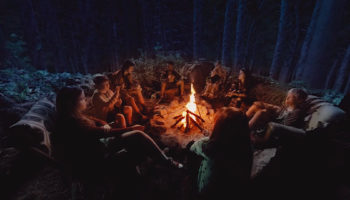Features > Film, TV & Games
Twin Pines’ VFX magic reconstructs 16th-century Seville for The Plague
A team of 35 VFX artists at Madrid-based studio Twin Pines created over 500 shots for La Peste (The Plague), the Spanish TV series set in 16th-century Seville.
Digitally recreating the city required the VFX team to work closely with historical advisors, documentary makers and an art director for VFX. The process included the complex development of visual layers and creation of 3D elements, using maps, etchings and paintings from the period for reference.
“Reconstructing the city was formidable given that there is practically nothing existing today of 16th-century Seville”, explained Juanma Nogales, VFX supervisor at Twin Pines. “It required a painstaking process combining historical seriousness with aesthetic taste.”
This saw the collaboration between multiple teams: Pepe Domínguez from the art department; (Yolanda Piña working on make-up; Pau Esteve heading up photography; Juan Ventura and Juanma Nogales responsible for VFX; and José Moyano and Iván Benjumea handling postproduction. Twin Pines embarked on the project long before shooting began. An initial phase of contextualisation was followed by execution, taking 10 months in total to complete.
“One of the biggest technical problems we came across was that, unlike other productions, we didn’t work in fields but in different sets in which the cameras moved freely in 360 degrees. Using immersive techniques, we had to insert the computer-generated elements”, recalled Nogales.
The port of Seville was the most complex element to replicate. Twin Pines recorded several images of the Guadalquivir river around the area of the Isleta in Coria del Río. This was then digitally mastered to achieve an end result that was historically realistic. The Twin Pines team also modelled ships and galleons in the port in 3D and integrated them into the different scenes.


The first episode of The Plague begins with the central character appearing on horseback and gazing at Seville from a distance. The horse was the only real element in the scene. In reality the main character was on a hill overlooking a motorway. Using a green screen and computer-generated 3D elements 16th-century Seville was reconstructed to produce an opening sequence with impact.


Twin Pines’ expertise in reproducing crowds of people was also beneficial to the project. For one episode they were required to fill a space holding around 15,000 people which only featured 100 extras. With the help of a greenscreen a large number of individual characters were recreated by digitally after scanning the extras and their clothing in 3D.
Many of the buildings and monuments in the series are not from Seville either. Nowadays buildings or areas such as the cathedral, the city walls, the poor quarters, the city gates and St George’s Castle are completely different to how they appeared in the 16th century or are surrounded by a different landscape. Therefore, the Twin Pines team used similar buildings as references, many of which were photographed and rebuilt in 3D.
The Plague’s visual effects included major digital extension of the sets, reconstruction of natural spaces and integration of backdrops. The process generated a volume of VFX data of around 50 terabytes and over 19,500 hours of rendering. Nuke Studio software by Foundry was crucial in enabling VFX, editing and finishing with a single application.
You can view Twin Pines’ showreel and effects from The Plague in the video below…
Topics
- Features
- Film, TV & Games





